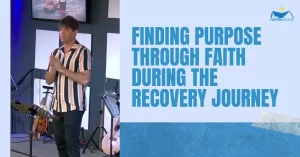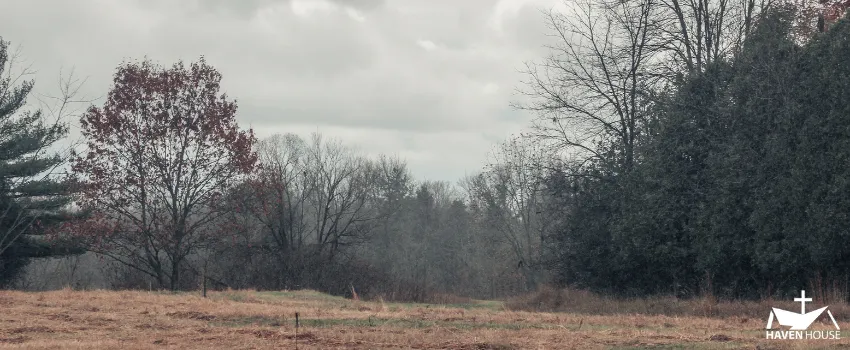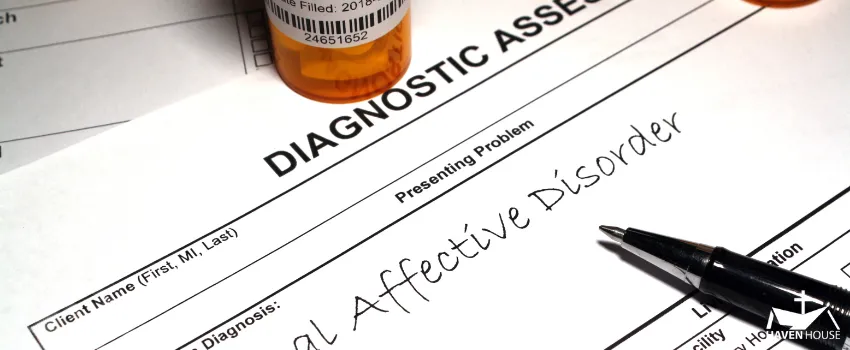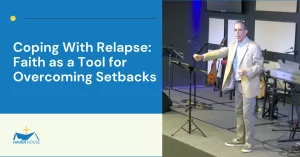

Table of Contents
Seasonal Affective Disorder (SAD) is a type of depression that affects people at specific times of the year. According to a study from the University of Texas Medical Branch, about 10 million Americans experience SAD between fall and winter.
In this blog post, we will explore various seasonal affective disorder symptoms, their connection to addiction, and how seeking help from a rehab center can provide hope and recovery.
Understanding Seasonal Affective Disorder (SAD)
Seasonal Affective Disorder (SAD) is a type of depression that typically occurs during the fall and winter months when the days are shorter and darker. Some people may experience SAD during the spring and summer, although this is less common.
Like other forms of depression, seasonal affective disorder symptoms can vary from mild to severe. Its exact cause is unknown, but experts believe it is linked to reduced sunlight exposure, which can disrupt your body’s internal clock and affect certain brain chemicals, such as serotonin.
Lastly, SAD can disrupt the body’s production of melatonin, a vital hormone in sleep-wake cycles. The body typically produces more melatonin in the evening to promote sleep and less in the morning to encourage wakefulness. However, with SAD, this natural rhythm can be thrown off, leading to grogginess and difficulty getting out of bed in the morning.
Is Seasonal Affective Disorder a Mental Health Condition?
Seasonal affective disorder is a type of depression and, therefore, considered a mental illness. It shares many characteristics with other forms of depression, such as persistent sadness, loss of interest in activities, and changes in appetite and sleep patterns.
SAD, however, is unique in its seasonal pattern, with symptoms typically occurring during specific times of the year. While it is essential to recognize SAD as a mental illness, it is also essential to remember that it is a treatable condition. Individuals can find relief through various seasonal affective disorder treatment plans, including therapies and interventions.
Recognizing Seasonal Affective Disorder Symptoms
Like in many forms of depression, symptoms of SAD can manifest differently, and their intensity can vary from person to person. Some common SAD symptoms include:
- Depressed mood for most of the day.
- Loss of interest in activities you once enjoyed.
- Low energy and fatigue.
- Difficulty concentrating and making decisions.
- Feeling sluggish or agitated.
- Changes in appetite, often with a craving for carbohydrates.
- Weight gain.
- Problems with sleep, such as insomnia or excessive sleepiness.
- Feelings of hopelessness, diminished worth, or guilt.
- Withdrawal from social interactions.
If you notice any symptoms, it’s essential to consult a healthcare provider for a proper diagnosis and discuss potential seasonal affective disorder treatments.
Connection Between Seasonal Affective Disorder and Addiction
Seasonal affective disorder and addiction are connected in a complex and cyclical manner. The symptoms of SAD can lead individuals to seek relief through self-medication, often in the form of alcohol or drug use. The temporary euphoria and escape from emotional pain provided by substances can seem like an attractive solution for those struggling with SAD.
However, this initial relief is short-lived and can quickly develop into a dangerous cycle. Substance abuse can worsen symptoms and increase the risk of developing a substance use disorder. The chemical changes caused by drugs and alcohol can disrupt the brain’s natural balance, exacerbating depression and leading to various mental health issues.
Substance abuse can negatively impact a person’s relationships, work, and overall quality of life. It can further isolate individuals, making them more prone to withdrawal and social avoidance, which are common symptoms of SAD. This vicious cycle of addiction and SAD can quickly become life-threatening if left untreated.
Seasonal Affective Disorder Treatment Options
Seeking appropriate seasonal affective disorder treatments is vital for breaking the cycle of addiction and improving one’s overall well-being. While each person’s journey to recovery may be different, several effective approaches can help individuals manage SAD and reduce the risk of relapse, including:
1. Medication
Antidepressant medications may be prescribed to alleviate SAD symptoms. Following the prescribed treatment plan and attending regular check-ups with a healthcare provider is essential for effective seasonal affective disorder treatment.
2. Light Therapy
Light therapy entails intense artificial illumination to help reset the body’s internal clock and mitigate the symptoms of seasonal affective disorder. This therapy is often used in the morning and can be done at home or under medical supervision.
3. Counseling
Therapies, particularly cognitive-behavioral therapy (CBT), offer a structured approach to treating seasonal affective disorder. CBT is designed to challenge and change unhelpful cognitive distortions and behaviors, improve emotional regulation, and develop personal coping strategies. It aims to reverse the downward spiral of depression by altering negative thought patterns that exacerbate the symptoms of SAD.
In doing so, individuals can gain valuable skills to manage their symptoms, making coping with seasonal mood changes easier. With consistent therapy sessions, patients can build resilience and achieve long-term improvement, turning a debilitating cycle of symptoms into a manageable condition.
4. Supportive Services
Joining support groups and engaging in activities that promote social interaction can provide emotional support and reduce feelings of isolation, which are common seasonal affective disorder symptoms.
Faith-Based Solutions for SAD and Addiction Treatment
Choosing a faith-based recovery center can offer unique benefits when seeking seasonal affective disorder treatments. These centers integrate spiritual support with evidence-based therapies, providing individuals with a comprehensive approach to healing.
Here are some reasons why a faith-based recovery center may be the right choice for you:
1. Emphasis on Holistic Care
Faith-based recovery centers prioritize holistic care, addressing the physical, psychological, and spiritual aspects of a person’s well-being. They recognize that SAD and addiction impact all areas of life and offer a range of services to support recovery from a comprehensive perspective.
2. Supportive Community
These centers foster community, providing individuals with a support network during treatment for SAD. The power of connection and understanding can be especially beneficial for those struggling with SAD symptoms, as it can counteract the withdrawal and social avoidance patients commonly experience.
3. Integration of Faith
Integrating faith into the recovery process can provide a source of hope, strength, and guidance for individuals. Faith-based centers offer spiritual resources, including counseling, prayer, and worship services, for those who find comfort and healing in their religious beliefs.
4. Values-Based Approach
These centers typically have a values-based approach, promoting compassion, forgiveness, and personal growth. Such an approach can help individuals address underlying issues contributing to seasonal affective disorder and addiction and develop positive coping strategies for long-term recovery.
Key Takeaway
Seasonal affective disorder (SAD) is a type of depression that occurs during specific times of the year when there is less sunlight. SAD can fuel addiction, as individuals may use substance abuse to self-medicate and find temporary relief. However, this can worsen the symptoms of depression and lead to a dangerous cycle of addiction and withdrawal.
Seeking treatment for SAD is essential to break this cycle and improve overall well-being. Several seasonal affective disorder treatments, such as medication, light therapy, and counseling, can effectively manage SAD and reduce the risk of relapse.
Choosing a faith-based recovery center for a seasonal affective disorder treatment can provide additional benefits, including a holistic approach to care, a supportive community, and integrating faith into recovery. These elements can help individuals find the strength and guidance to overcome SAD and addiction and embark on lasting recovery.
Find Healing and Hope at Haven House Recovery
If you or a loved one is struggling with addiction, Haven House Recovery Center can help. As a faith-based recovery center in Clarksville, TN, we offer a range of personalized treatment programs to address the unique needs of individuals. Reclaim your life from addiction. Contact us today and take the first step toward lasting recovery.
Newsletter Signup
Discipleship Training
“The teaching of the wise is a Fountain of Life, turning a person from the snares of death.”
Proverbs 13:14 NIV




